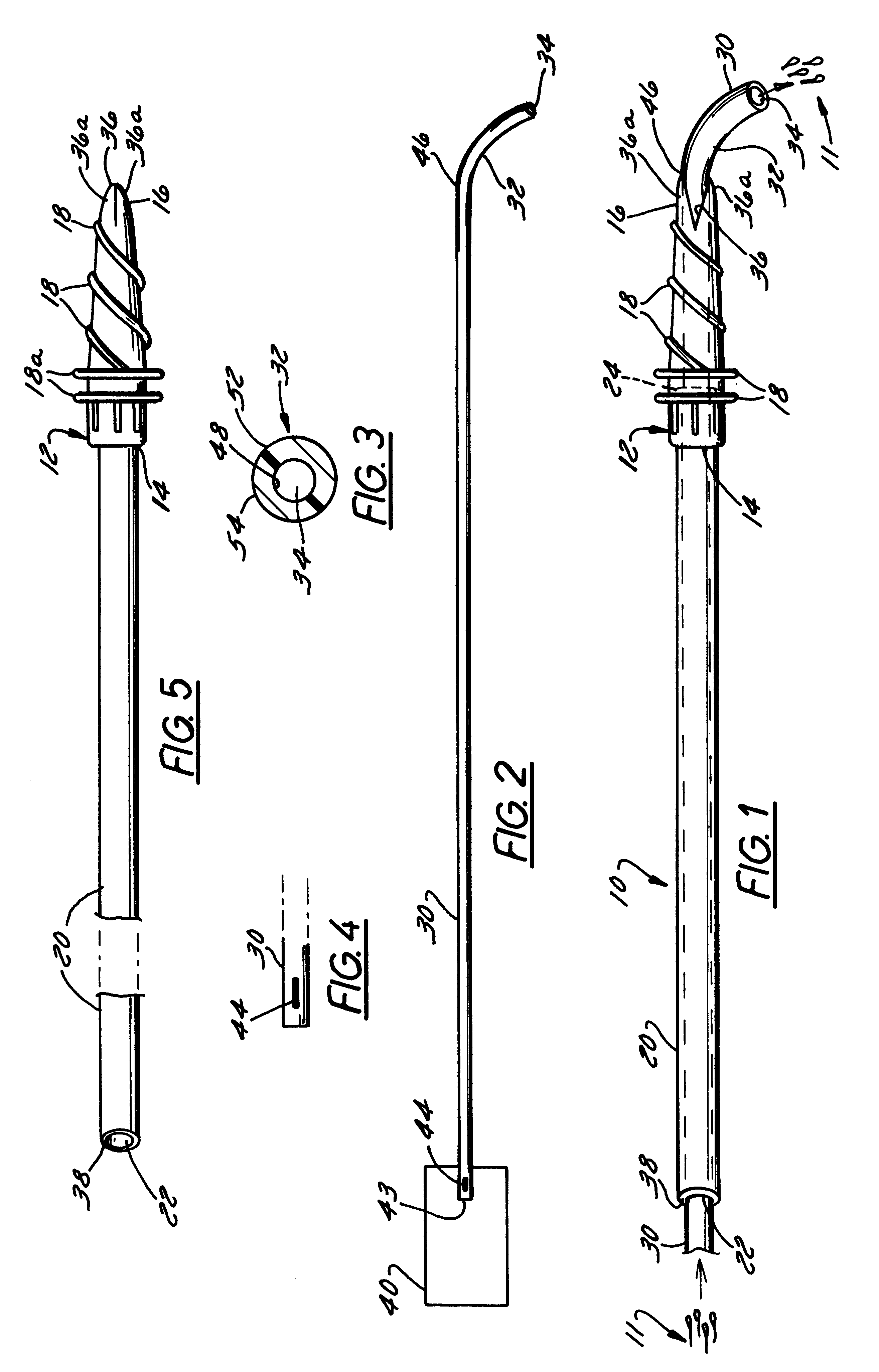Device for trans-cervical artificial insemination and embryo transfer
a technology of transcervical which is applied in the field of mammals' artificial insemination and embryo transfer, can solve the problems of reducing the chance of diseases and physical injuries that can be associated, unable to determine whether the instrument is working properly, and annual monetary losses, so as to reduce the time of insemination and facilitate the delivery of fluid safely and quickly. , the effect of reducing labor costs
- Summary
- Abstract
- Description
- Claims
- Application Information
AI Technical Summary
Benefits of technology
Problems solved by technology
Method used
Image
Examples
Embodiment Construction
The present invention and the various features and advantages details thereof are explained more fully with reference to the non-limiting embodiments described in detail in the following description.
FIG. 1 shows an artificial insemination device or apparatus 10 and its components for depositing of semen or other medium 11 into a uterus of a mammal (not shown). The apparatus 10 comprises a sheath 20, a tubular depositing chamber 30, and a conical chamber 12 to be engaged with one another to transfer semen or other fluid medium from a receptacle or packaging unit 40 (FIG. 2) into the uterus of the mammal. The conical chamber 12 has a fore end 14, and an aft end 16, and an exterior spiral formation 18 configured for penetrating the passageway of a cervix. The fluid 11 could also contain live embryos or some medicine. Two circular sealing rings 18a provide a seal to prevent the fluid from leaking out of the cervix.
FIG. 2 shows the tubular depositing chamber 30 having an arcing end 34 fo...
PUM
 Login to View More
Login to View More Abstract
Description
Claims
Application Information
 Login to View More
Login to View More - R&D
- Intellectual Property
- Life Sciences
- Materials
- Tech Scout
- Unparalleled Data Quality
- Higher Quality Content
- 60% Fewer Hallucinations
Browse by: Latest US Patents, China's latest patents, Technical Efficacy Thesaurus, Application Domain, Technology Topic, Popular Technical Reports.
© 2025 PatSnap. All rights reserved.Legal|Privacy policy|Modern Slavery Act Transparency Statement|Sitemap|About US| Contact US: help@patsnap.com



